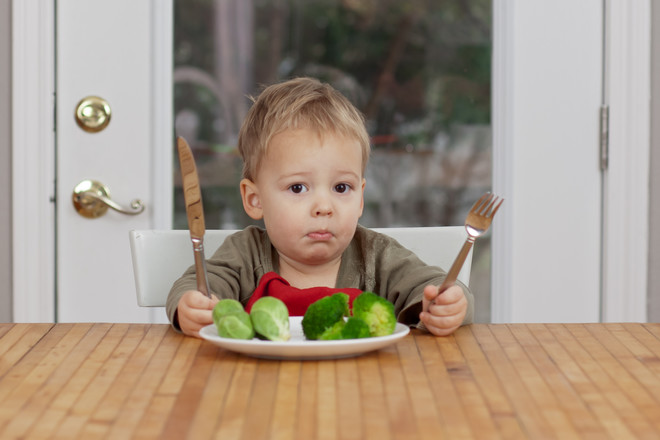WHO recommends starting feeding babies onbreastfeeding for half a year. Up to six months, ideally, they do not even need water - mother's milk replaces it too. "Artificial" natural food will be offered a little earlier - from four months. Photo: GettyImages
Photo: GettyImages
What to feed?
The feeding system consists of three componentssteps: vegetables, cereals, meat. Of course, not all. The baby's first vegetables will be zucchini, cauliflower, broccoli and potatoes. Preferably buckwheat, corn or rice porridge. Meat - turkey, beef, veal, rabbit. The first baby fruits will be banana, apple, peach and pear. The same authoritative WHO gives preference not to home-cooked food, but to industrially produced products. That is, to those same jars that the older generation turns up their noses at in bewilderment. We partly agree with the health organization: if you have not grown these vegetables or fruits yourself and cannot guarantee their quality, then it is better to buy a jar of puree than store-bought zucchini.
How to feed?
- Give your body a couple of weeks to get used to it.to each new product. Otherwise, you will not understand which of the 15 new dishes the baby is allergic to. - Start feeding with very small doses. The first test is literally a teaspoon. - It is advisable to try new things in the first half of the day, so that you can track the reaction later. Ideally, breast or formula in the morning, and a new product during the second feeding. - Do not introduce new products during the child's illness, as well as a week before vaccinations. - The first food should be semi-liquid, without pieces. The child may choke on thicker products for now. - The food should always be fresh. Once you open a can, you need to eat it on the same day. So in the first weeks, until the portion size reaches the appropriate age, either throw away the rest of the open can or finish it yourself. There are no other options. Photo: GettyImages
Photo: GettyImages
Or maybe pedagogical lure?
“I let my son try a little bit of everything.— My friend's eight-month-old toddler steals tomatoes, pieces of fish, and fried potatoes from her plate. — He likes it. French fries and burgers at eight months are, of course, too much, but indeed, many parents increasingly prefer "pedagogical feeding." This method is based on the baby's interest in adult food. From 5-6 months, he is offered products from the adult table that he shows interest in. Of course, this is done in microdoses that do not injure the child's body. Mothers who practice this method are sure: this way the child will more easily switch from baby food to regular food. And for adults, this is a reason to switch to a healthy diet. This method is not suitable for children with frequent allergies, since it is impossible to predict what will cause a reaction.
Take note
At what age and what foods to introduceDiet*6 months – vegetable puree, vegetable oil.7 months – dairy-free porridge, butter, fruit puree.8 months – milk porridge, meat puree, yolk.9 months – baby cookies, kefir, cottage cheese.10 months – fish – white, low-fat varieties, juice. You can offer your child not completely liquid food, but with small pieces, so that he learns to chew. For example, instead of meat puree, a steamed meatball.12 months – berry puree.*These are general recommendations for babies who are breastfed. There may be changes in it. For example, underweight children are fed porridge instead of vegetables. A pediatrician draws up a complementary feeding scheme for each child. Photo: GettyImages
Photo: GettyImages
It is harmful!
The older your child is, the more diverse his/herdiet. But there are a number of products that pediatricians strongly recommend not to offer to a child. Some are prohibited until at least three years of age, other foods are harmful for older children as well. So, let's clear the table: From one to three years old— Any meat broths and fried foods, including breaded ones.— Sausages and cold cuts, except those made for children.— Any cottage cheese desserts and mass-produced milkshakes (glazed curds, milk with different flavors, etc.).— Seafood.— Chocolate in all its forms, rich buns.— Cakes and cream pastries.— Millet porridge.— Salted, smoked fish, fatty types of cheese. From three years and older— Mushrooms - in any processing.— Fatty meat and fish.— Duck and goose meat - although poultry, but not for a child.— Canned food.— Products with food additives, which are not very useful even for adults.— Hot sauces, mustard, horseradish, vinegar, mayonnaise.— Coffee, concentrated juices and drinks, carbonated sweet drinks.— Pates. Also interesting:









